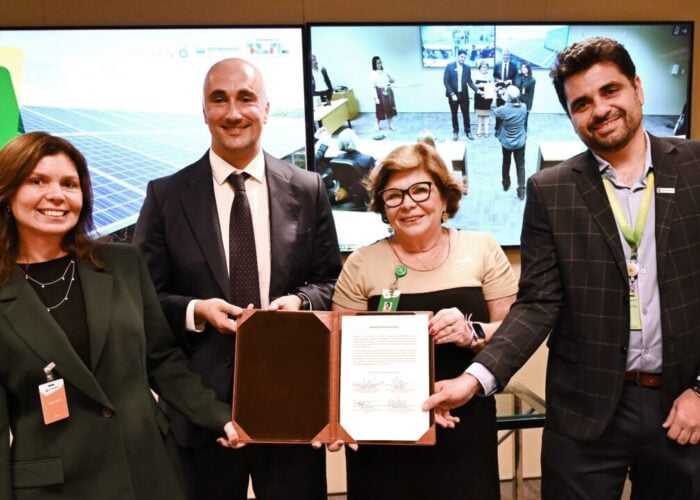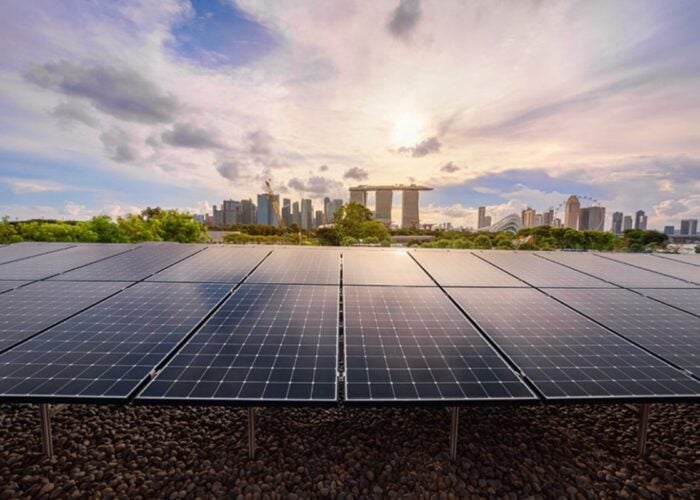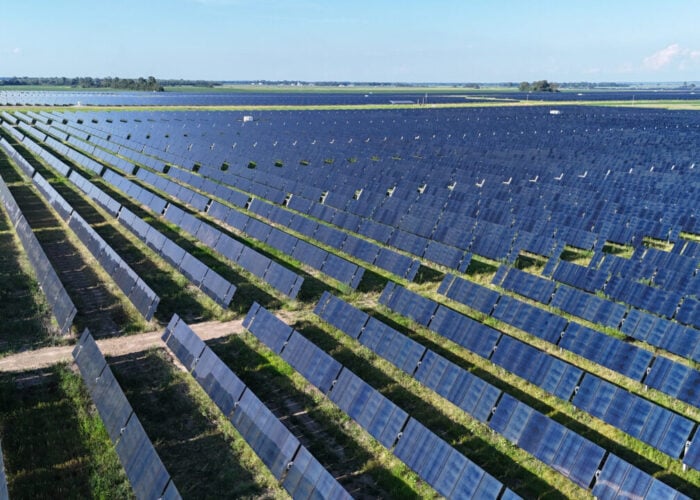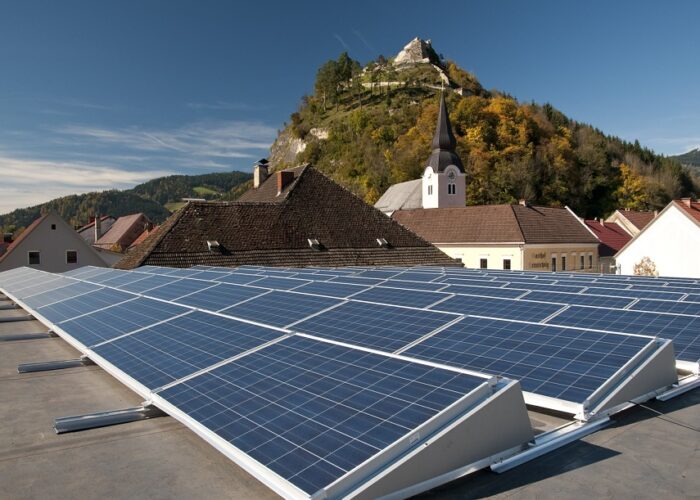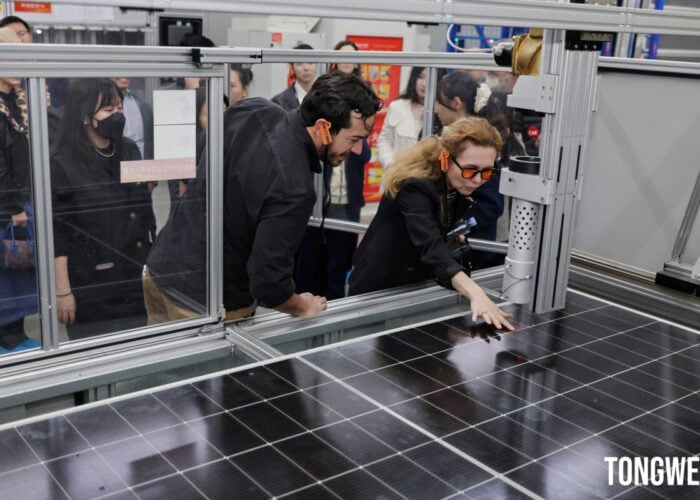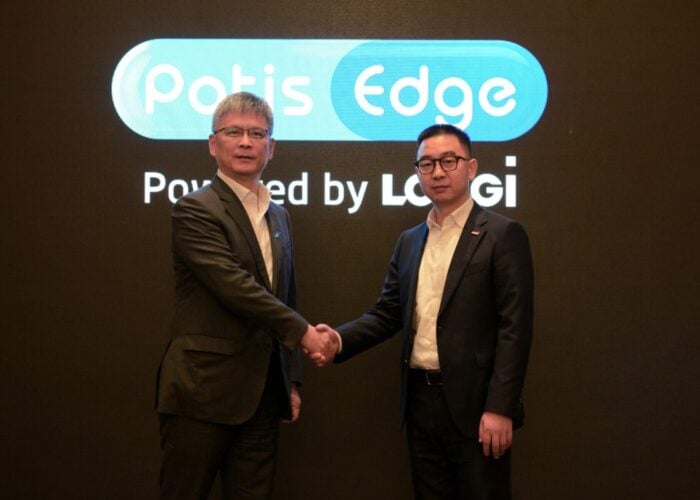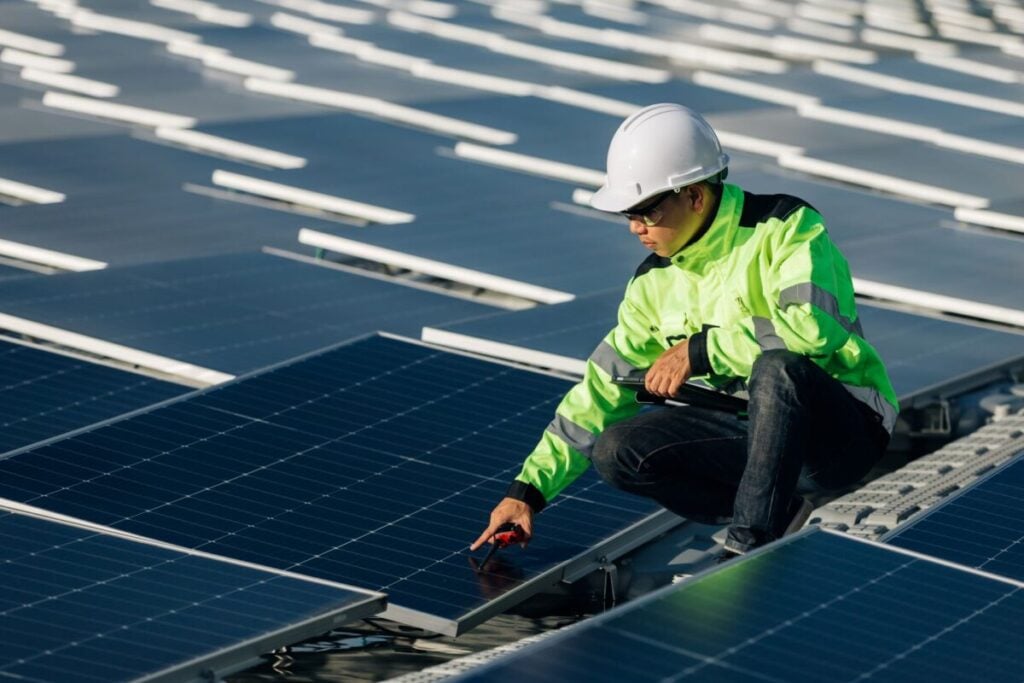
At the TÜV Rheinland 2025 PV & Storage Buyers’ Workshop, leading international buyers and project investors – including TotalEnergies, Lightsource BP, Engie, Solarpro, Brookfield Renewable and Enel – gathered to discuss key industry issues such as new technology equipment procurement, supply chain management and ESG compliance.
The PV module industry is currently entering a critical phase of technological transformation. N-type back contact (BC) technology is gaining prominence as the next-generation solution, while TOPCon modules – having just completed their transition from PERC – are now advancing from version 1.0 to 2.0. This evolution has driven module power and efficiency to new benchmarks, with mass-produced modules now reaching 670W, with the conversion efficiency topping 24.8%.
Try Premium for just $1
- Full premium access for the first month at only $1
- Converts to an annual rate after 30 days unless cancelled
- Cancel anytime during the trial period
Premium Benefits
- Expert industry analysis and interviews
- Digital access to PV Tech Power journal
- Exclusive event discounts
Or get the full Premium subscription right away
Or continue reading this article for free
Regarding this wave of product and technology upgrades, what are the views of module manufacturers’ clients—buyers from around the world? From the perspective of ensuring supply chain quality, how do buyers evaluate and decide when selecting products with different technological roadmaps from various companies? Who will be the first to test new products? During mass procurement, at what stage is third-party quality management typically implemented?
To address these questions, PV Tech spoke with buyers from different countries to gather their perspectives and feedback, gaining insights into how the market views the technological competition and evolution in the PV module sector.
Procurement of new technology products: Starting with LONGi’s 1GW BC module order
In terms of technology product launches, Engie has emerged as one of the first buyers to “test the waters.”
This year’s most notable BC module order is undoubtedly the strategic collaboration contract signed between Engie and LONGi Green. It came as somewhat of a surprise that Engie, which has traditionally been conservative toward new technologies, boldly signed an order for over 1GW of new-technology modules this time.
These modules are LONGi’s brand-new Gen II BC products, with a power output of up to 670W and a conversion efficiency of as high as 24.8%. From the perspective of technology upgrades, BC is still in the early stages. Based on Engie’s past procurements, it would typically take a considerable amount of time before using BC modules in its projects.
“Sometimes partnerships hinge on strategic relationships, especially when procurement volumes are large – this is crucial,” revealed a representative from a major Chinese procurement company. It noted that the company partners with leading PV manufacturers such as LONGi Green and JinkoSolar. “Our EPC contracts, both domestic and international, are substantial in scale and contract value. Once technologies mature, strategic partnerships will become a key differentiator in supplier selection.”
“From a technical perspective, particularly given the rapid evolution of Chinese technology supply, we need to explore how to deploy these technologies in the early stages to boost investment returns or lower procurement costs,” said Zhang Xiaoke, Procurement Director of Lightsource bp China.
When adopting new technologies, risk-averse manufacturers typically require a complete qualification process: from feasibility studies and prototype testing to quality certification, field validation, and phased project deployment.
Qu Yong, Procurement Director at Brookfield Renewable, stated: “We need to pay attention not just to products and process upgrades, but also to potential quality issues that may arise from adopting new materials. Two years ago, we encountered problems in a major PV project where we used a batch of new modules produced with new equipment and processes – issues emerged at the module edges, which impacted the project. While we’re open to trying new products, a comprehensive evaluation and technical analysis are essential. Personally, I don’t fully trust pilot demonstrations. Scaled project applications are preferable.”
TotalEnergies also favours a prudent approach. Ling Jin, Manager of Integrated Power, Strategic Supply Chain at the company, explained: “We firmly believe new technologies will drive industry progress. To ensure tangible benefits brought by new products to projects, we’ve established a clear verification process prior to deployment. Our labs conduct additional verification of parameters stated in new product specifications. Our BC product testing program is progressing as planned, with verification outcomes expected by year-end. During production, we closely collaborate with third-party agencies to monitor quality data for modules and other equipment.”
The approaches of these two energy giants mirror their strategy when introducing TOPCon modules two years ago, when the PV industry was at the initial stage of transitioning from p-type to n-type modules. Now, just two years later, the industry is shifting its focus to BC, bringing about similar challenges. The same challenges have reemerged, but with their prior experience, these buyers are now responding more composedly with better-established mechanisms.
Price vs. quality: Which matters more?
According to on-site buyer feedback, engaging third-party organisations for testing and evaluation during preliminary research has become a common practice. With the increase in module power, the expansion of size and the thinning of materials, product quality has emerged as a critical issue.
Zhang Yonggang, Supplier Quality Manager at Engie China, stated: “During project execution and mass production, we engage third-party agencies to conduct category-specific inspections – particularly for new high-efficiency modules. When we identify higher production risks or when a product involves significant project investments, rigorous quality control becomes essential.”
This perspective gained broad consensus. Compared to the PERC-era technologies, TOPCon, heterojunction (HJT) and BC technologies are more sensitive to manufacturing processes and encapsulation materials. All participants agreed on the necessity of strict Bill of Materials (BOM) audits to ensure purchased modules and equipment meet reliability standards.
Regarding this, Taki Bai, General Manager of Solar & Commercial Products at TÜV Rheinland Greater China, emphasised that supplier quality control for PV storage power plants is becoming increasingly critical.
This is particularly true given the ongoing cost reductions in PV products and the relative immaturity of storage products. Meanwhile, failures in existing power plant markets have significantly increased, with issues emerging not only in PV products but also in mounting structures, components, and transmission/distribution equipment. He called on the industry to focus on supply chain quality management and actively address trade barriers.
Ling Jin noted that to achieve optimal risk control within limited quality management budgets and testing timelines, it’s essential to dynamically adjust quality control methods. In this process, the extensive experience of third-party organisations is invaluable, as they provide both technical and practical guidance. For instance, they can advise which specific items should be prioritised for inspection based on different technologies, helping to strike a balance between quality, delivery timeline and cost.
Price and cost remain key factors influencing procurement decisions across companies, as they directly impact return on investment. For international energy companies, in addition to price and quality, delivery and long-term cooperative relationships are equally important considerations. The industry must balance these competing priorities to ensure sustainable development while maintaining profitability.
Zhang Xiaoke pointed out that market factors must also be considered, as different regional markets have varying sensitivities to price. “For instance, the US, as the market with the highest average selling price, shows greater price tolerance. Some European clients also demonstrate a certain level of price tolerance, while markets like India or China are more price-sensitive,” he explained.
According to Infolink’s price monitoring report, among major global markets, the US has the highest module prices, followed by Europe, then China. However, the price sensitivity shows an inverse relationship: while China has the lowest price, it demonstrates the highest price sensitivity and the most intense competition.
Unlike international energy giants, Solarpro adopts a more flexible procurement strategy when it comes to new products and quality control. Chen Xiaoxu, China Supplier Chain Operation Manager at Solarpro, shared its approach: “After conducting technical solution matching and cost calculations, we primarily focus on module suppliers with industry-leading shipment volumes. In terms of quality, we believe top-tier manufacturers have been fully validated by the market. For overseas markets, we pay special attention to local pre-sales and after-sales capabilities. This comprehensive approach makes our work with banking investors easier.”
Chen further elaborated that this strategy allows Solarpro to balance innovation adoption with risk management, which is particularly important when expanding into emerging markets with different regulatory environments and customer expectations. Their supplier selection process weighs technical performance, bankability, and local support capabilities equally to ensure project feasibility.
ESG and supply chain traceability: The new competitive edge for Chinese PV companies
Currently, sustainable development has become one of the essential capabilities for global enterprises, and environmental, social and governance (ESG) is one of the key indicators for evaluating a company’s sustainability. For Chinese PV companies operating extensively overseas, the pressure from international markets has made them acutely aware of the urgency and importance of ESG compliance.
In recent years, leading PV companies such as Canadian Solar, Trina Solar, JinkoSolar, Tongwei, LONGi Green, and GCL-SI have significantly increased their focus on ESG and allocated more resources to this area.
“The development of ESG in PV companies has indeed accelerated over the past two years, especially in the module sector, where ESG practice has become quite mature. Since 2022, we have required suppliers to meet ESG standards, ensuring traceability from modules to polysilicon. This includes full supply chain information and ESG audits of corresponding factories, aiming at achieving transparent supply chain management and complying with end customers’ traceability requirements. After two years of implementation, even top-tier and second-tier module manufacturers now have no problems in traceability,” said Chen Yan, Global Category Manager-Module at Lightsource bp.
Wu Bin, Supply Chain Quality Manager (Asia Pacific) of Enel, concurred that, “We now require suppliers to provide environmental product declaration (EPD) certificates and sign supplier codes of conduct, thereby enabling traceability based on module serial numbers. During second-party supplier audits, we have incorporated corporate supply chain compliance and traceability systems as mandatory assessment criteria – all new requirements introduced in recent years. Additionally, regarding traceability, suppliers must provide potential supplier lists up to the seventh level of the BOM for specific projects when signing contracts, otherwise cooperation is impossible.”
Regarding leading companies’ traceability efforts, Wu Bin further noted: “Some industry leaders have now established vertically integrated traceability systems that can track materials back to quartz mines – a capability unimaginable just a few years ago. We used to find that traceability got stuck at certain stages, but now there are almost no problems. Mainstream companies have become quite mature in this aspect.”
“For traceability of upstream materials like metallurgical silicon, requirements vary based on market and project buyer demands. Our ESG management of suppliers has become relatively strict – we now require not just company-level ESG reports from suppliers, but also factory-level documentation. We need to identify which factory produces the ordered modules and conduct corresponding ESG audits. Moreover, due to differences in supply-demand relationships, implementing identical ESG management requirements faces significantly varying difficulties across different markets,” Chen Yan added.
For corporate ESG assessments, in addition to companies issuing their own ESG reports, another common approach is conducting audits through third-party organisations like TÜV Rheinland. It is reported that in June this year, TÜV Rheinland officially released its latest self-developed 2 PfG traceability standard, providing technical guidance for PV module supply chain management and product traceability to help companies improve quality transparency and credibility.
Taki Bai stated that TÜV Rheinland has provided many buyers with PV product traceability and ESG audit services to meet increasingly stringent requirements in European and American markets. It is foreseeable that related demands for non-PV products – such as energy storage systems, inverters, and transmission/distribution equipment – will gradually grow. Currently, TÜV Rheinland has mature self-developed standards covering traceability and ESG audits for PV and energy storage products.
“ESG audits for module manufacturers are arranged by us through third parties, while upstream suppliers (from cells to polysilicon and even to the mining level) provide their own audit reports. If they cannot provide these, we arrange third-party audits,” said Chen Yan. Over the past two years, there has been little differentiation in products and prices in the market, making ESG and traceability capabilities the key competitive differentiators.
From buyers’ perspectives on ESG, we can subtly perceive that the industry is shifting towards another form of intensified competition, as leading PV companies are moving beyond competing on price and products to now competing on ESG performance.

